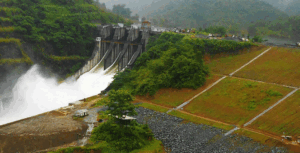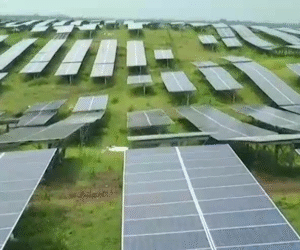Greater Noida (Hridaya Mohan): In a landmark judgment with long-term consequences for the rejuvenation of India’s stressed manufacturing assets, Hon. Supreme Court has set aside the resolution plan for Bhushan Power & Steel Ltd. (BPSL) proposed by JSW Steel. The judgment points out that “there was an entire spectrum of lacunas and flaws in the Resolution Plan of JSW with regard to non-compliance of the mandatory requirements under the IBC (Insolvency and Bankruptcy Code)”.
Why was JSW’s ‘Resolution Plan’ rejected?
According to the ruling, the upfront payments and commitment with regard to infusion of equity into the company was one of the main criteria on which JSW had scored the highest in the evaluation matrix determined by the Company of Creditors (CoC) and was chosen as the “successful resolution applicant”.
However, the ‘Resolution Plan’ was not implemented for about two years which violated the purpose of the IBC, with the net result that “the upfront payments as agreed to be made in the Resolution Plan within thirty days of the approval of the plan by NCLT was delayed by 540 days in respect of payment to the Financial Creditors and by 900 days in respect of payment to the Operational Creditors,” the court observed.
This had “frustrated the very object and purpose of the IBC”, according to the court which directed the NCLT to initiate “Liquidation Proceedings against the Corporate Debtor-BPSL”.
The Impacts
The Supreme Court’s decision to uphold JSW Steel’s takeover of Bhushan Steel under the IBC process is more than just a corporate resolution—it’s a watershed moment for India’s economic landscape. This ruling doesn’t merely settle a legal dispute; it reinforces the foundations of India’s insolvency framework while sending powerful signals across industries, financial markets and global investment circles.
-
A Vote of Confidence for India’s Insolvency Framework
By upholding the sanctity of the Committee of Creditors’ (CoC) decision, the Supreme Court has strengthened the credibility of the IBC mechanism. This judicial endorsement comes at a crucial time when India is positioning itself as an attractive destination for distressed asset investments. The message is clear: commercially viable resolution plans, once approved, will not be derailed by protracted litigation.
For financial creditors, particularly banks burdened with NPAs, this brings much-needed certainty. Faster resolutions mean quicker recoveries, enabling lenders to recycle capital into productive sectors of the economy.
-
The Steel Sector’s Consolidation Wave Gains Momentum
JSW’s acquisition is the latest in a series of big-ticket consolidations reshaping India’s steel industry. Following Tata Steel’s takeover of Bhushan Steel and ArcelorMittal’s acquisition of Essar Steel, this verdict cements the trend of stronger players absorbing stressed assets.
The implications extend beyond steel. Sectors like cement, power and infrastructure—where multiple players face financial stress—could witness similar consolidation. The result? Leaner, more efficient industries better equipped to compete globally.
-
Foreign Investors Take Note
Global investors have been cautiously observing India’s insolvency journey. The Supreme Court’s decision sends a strong signal that India’s legal system supports credible, time-bound resolutions. This could unlock a new wave of foreign investment in distressed assets, particularly from specialized turnaround funds and strategic buyers looking for value opportunities.
-
The Unfinished Agenda: Protecting Smaller Stakeholders
While the verdict is a win for financial creditors, it highlights lingering concerns about operational creditors—vendors and suppliers who often recover pennies on the rupee. Their continued vulnerability could strain supply chains and discourage small businesses from engaging with larger corporations.
-
Potential Challenges: Litigation Risks and Fair Valuation Concerns
While the verdict provides clarity, it also highlights unresolved issues:
- Valuation Disputes: Some stakeholders argue that Bhushan Steel’s assets were undervalued, leading to losses for certain creditors. Future cases may see increased scrutiny on valuation methods to prevent disputes.
- Operational Creditors’ Rights: The IBC still favors financial creditors, leaving smaller suppliers vulnerable. Reforms may be needed to ensure fairer treatment.
- Judicial Overreach vs. Commercial Wisdom: The Supreme Court upheld the CoC’s decision, but future disputes could arise if courts intervene more aggressively in commercial matters.
-
The Road Ahead
While the Supreme Court’s decision provides stability, the true measure of success will lie in the implementation of these reforms. The government must consider:
- Establishing an IBC Reform Committee with industry, legal and academic experts
- Pilot testing new mechanisms in select jurisdictions
- Creating a public dashboard tracking resolution metrics
- Impact assessment studies at regular intervals
-
The Bigger Picture: Economic Stability Through Legal Clarity
Beyond corporate balance sheets, this judgment contributes to broader economic stability. By reducing uncertainty in the resolution process, it helps create a more predictable business environment—a critical factor for sustained growth.
The Supreme Court’s decision marks an important milestone, but the journey isn’t complete. As India aims for a $5 trillion economy, the IBC framework must evolve to balance creditor rights with equitable treatment of all stakeholders. For now, the message is clear: India’s insolvency system is maturing and the economic ripples will be felt far beyond the courtroom.
About the Author
Mr. Hridaya Mohan (hridayamohan@yahoo.co.in) is a regular Columnist with a renowned Indian daily “The Hitavada” and some other newspapers / magazines internationally. Superannuated as Executive Director, Steel Authority of India Ltd. (SAIL), he is Senior Adviser, Metallon Holdings Pvt. Ltd. presently. He headed SAIL office at Beijing as Chief Representative (China & Mongolia) for six years. He has published and presented seventeen papers globally. Recipient of “Sir M Visvesvaraya Gold Medal”for one of his papers, “Benchmarking of Maintenance Practices in Steel Industry” from The Institution of Engineers (India), he was awarded with “Scroll of Honour” for the excellent contributions to Engineering fraternity from IE(I), Bhilai, “Jawahar Award” for leadership excellence in SAIL and “Supply Chain Leader – 2017” award from IIMM.









